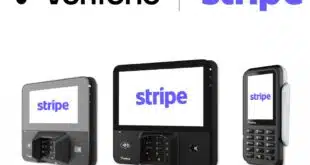By Kevin Woodward
@DTPaymentNews
U.S. shoppers flooded into stores and online this past weekend—Macy’s Web site crashed on Black Friday from the crush—to find holiday gift deals, with many putting their chip cards to use, though e-commerce spending, where the fraud-prevention feature of the chip is immaterial, continues to increase.
In stores, evidence of the growing prevalence of EMV chip cards surfaced in a Black Friday report from Cayan LLC, a Boston-based payments provider. Black Friday is the Friday following Thanksgiving, when many retailers offer discounts on purchases.
At the cash register, 55% of transactions were made with a chip card, Cayan says. Its analysis included more than 935,000 transactions made in-store and processed via its gateway. Only 34% were made with a magnetic-stripe card, and just 0.6% were mobile payments.
Visa Inc. reported in September that more than 373 million credit and debit cards bearing its mark were in circulation in the United States and that 36% of stores accepted chip cards.
Card use also varied by retailer size. At large retailers—those with 100 or more locations—consumers used chip cards 75% of the time, compared with 52% at smaller retailers. Mag-stripe cards were used for 36% of transactions at smaller retailers, compared with 24% at larger retailers.
Many large retailers have active chip acceptance because of their increased exposure to fraud, especially for consumer electronics, and because they typically have greater resources available to manage the installation. Smaller retailers may use point-of-sale software that has yet to be integrated with a chip card reader, and may have delayed the installation until the holiday-shopping season is over.
The percentage of transactions made with a mobile payment was unaffected by merchant size.
E-commerce, meanwhile, continued to make inroads among consumers. According to payment processor First Data Corp., 24.7% of all consumer spending activity over Thanksgiving and Black Friday was done online, an increase from 18.3% in 2015 and from 15.7% in 2014. That fits with the overall trend of e-commerce gaining share of retail sales. E-commerce sales accounted for 8.4% of all U.S. retail sales in the third quarter, compared with 7.5% in the same quarter in 2015, according to the U.S. Census Bureau.
Visa Inc. reported that e-commerce sales grew over the long shopping weekend by 18%. In 2015, spending during the Thanksgiving weekend increased 15% from 2014.
Taking a somewhat longer view, data firm comScore Inc. says e-commerce spending made with desktop computers increased 12% to $24.52 billion from $21.96 billion in 2015 in the first 25 days of the holiday-shopping season.
“Thanksgiving has now established itself as one of the more important online-buying days of the holiday season, while Black Friday also continues to gain in importance online–this year becoming the third biggest online desktop spending day of all-time after Cyber Monday 2015 and 2014,” comScore chief executive Gian Fulgoni, said in a press release.





